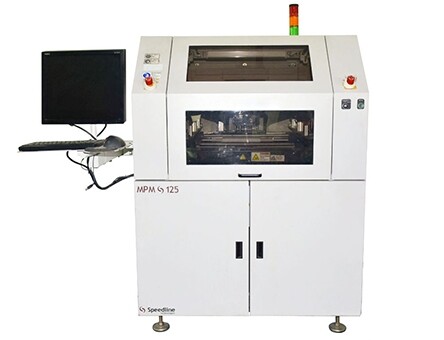Email format error
Email cannot be empty
Email already exists
6-20 characters(letters plus numbers only)
The password is inconsistent
Email format error
Email cannot be empty
Email does not exist
6-20 characters(letters plus numbers only)
The password is inconsistent


In electronics manufacturing, the stencil printing process is a critical step that demands precision and expertise. This article serves as a comprehensive guide on "How to Use a Stencil Printer," with a specific focus on the renowned MPM Screen Printer. From the basics of stencil printing to the nuances of operating an MPM screen printer, this guide aims to empower both novices and seasoned professionals in achieving optimal results.
Before diving into the specifics of using an MPM screen printer, it's essential to grasp the fundamentals of stencil printing. Stencil printing is a crucial process in surface mount technology (SMT) that involves depositing solder paste onto printed circuit boards (PCBs) through a stencil. The stencil acts as a template, defining the areas where solder paste will be applied, laying the groundwork for precise component placement.
The MPM screen printer is a pinnacle of technology in the world of stencil printing. Renowned for its accuracy and efficiency, this printer plays a pivotal role in the application of solder paste onto PCBs. Equipped with advanced features, the MPM screen printer is designed to meet the demanding requirements of modern electronics manufacturing, ensuring a seamless and high-quality stencil printing process.
To master the art of stencil printing with the MPM screen printer, proper setup is paramount. Calibration of the printer is essential to align with specific design parameters, ensuring precise and accurate solder paste deposition. Additionally, attention must be given to stencil tension, alignment, and the type of solder paste being used. A meticulous setup is the foundation for achieving consistent and reliable stencil printing results.
Once the MPM screen printer is set up, operating it effectively requires a nuanced understanding of the printing process. This includes loading the stencil, aligning it with the PCB, and configuring printing parameters such as squeegee pressure, speed, and separation distance. Operators must also monitor and maintain the printer regularly to ensure optimal performance.
After the MPM screen printer completes the stencil printing process, a critical step involves inspecting the results and fine-tuning as necessary. Automated optical inspection (AOI) systems can be employed to identify and rectify any defects or discrepancies in the solder paste application. This meticulous inspection ensures the highest quality in the subsequent stages of PCB assembly.
The world of electronics manufacturing is dynamic, and continuous improvement is vital for staying ahead. Manufacturers using the MPM screen printer should invest in ongoing training for operators and stay informed about updates and innovations in stencil printing technology. Embracing new methodologies and optimizing processes ensures that stencil printing remains at the forefront of efficiency and quality.
In conclusion, mastering the use of an MPM screen printer for stencil printing involves a harmonious blend of foundational knowledge and advanced technology. The MPM screen printer, with its precision and efficiency, stands as a key player in the realm of stencil printing. By understanding the basics, setting up and operating the printer correctly, and embracing continuous improvement, manufacturers can elevate their stencil printing processes to achieve consistent, high-quality results in the ever-evolving landscape of electronics manufacturing.